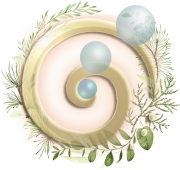
Hay fever, or allergic rhinitis is an allergic reaction/inflammation of the nasal airways. When an allergen (pollen, dust) is inhaled by an atopic person, then antibody production is triggered, which leads to the release of histamine and other chemicals, which in turn causes swelling, itching or mucus production. In some cases it can also cause skin rashes, incl. hives.
Hay fever can be seasonal or perennial:
- Seasonal: During pollen seasons; mostly develops after the age of 6.
- Perennial: Throughout the year; often observed in young children.

 Folk remedy
Folk remedy
Neti Pots are an ancient Indian answer not only to hay fever, but a clean nose for any occasion (such as controlled breathing, which is important for yoga). Neti pots rinse away the allergens with saltwater.
An Italian study found out that nasal flushing is a mild and indeed effective way of treatment.
Stir ¼ to ½ a teaspoon of noniodized table salt into a cup of lukewarm water. The mixture is poured into one nostril and drained out the other nostril. You can experiment with the amount of salt per water.
Other natural ways to treat or ease the symptoms of hay fever:
stinging nettle, butterbur, apple cider vinegar,
foods rich in omega-3 fatty acid (cold-water fish, walnuts, flaxseed oil, eggs)
A headache is a pain in the head or the neck, which can be caused by a number of different conditions of the head or the neck. Treatment depends on the cause, but the first step is mostly the removal of the pain itself, typically done by analgesics or painkillers. However, there are other ways to deal with a headache.
 Folk remedy:
Folk remedy:  Folk remedy:
Folk remedy:  Folk remedy:
Folk remedy: Hives, or Urticaria is a skin rash, characterized by red, itchy bumps. Hives are often a result of an allergic reaction, however it can also be caused by other things.
Acute urticaria lasts less than 6 weeks and is usually caused by an allergy.
Chronic urticaria lasts longer than 6 weeks and the cause is, in most cases, unknown. In many of these cases it is due to an autoimmune trigger. In some cases chronic urticaria simply accompanies a viral illnesses, such as a common cold. It can also be brought on by stress, especially posttraumatic stress.
 Folk remedy
Folk remedy
Take ¼ cup of brown sugar, 1 tablespoon of fresh ginger and ¾ cup of vinegar and a little bit of water.
Boil for several minutes.
Apply this mixture externally several times per day.


Hops are the female flowers of the Humulus Lupulus (common hop) plant, from the Cannabaceae family. Cannabis and Celtis belong to the same family of plants. Hops are commonly used for beer production, but they are also useful in herbal medicine.
Hops help with restlessness, anxiety and insomnia. They can be used alone, or are often combined with valerian.
Hops lose their potency after a few months storage.
 Folk remedy
Folk remedy
To treat insomnia, sleep on a pillow filled with hops.
Harvesting hops can sometimes result in dermatitis (skin inflammation). Hops are toxic to dogs!
All the information provided within the Herbalism & Healing glossary and guide is collected and shared responsibly and to the best of the author's knowledge. Neither the author nor the website offer any guarantees for any of the information, nor do they take any responsibility for anything that may or may not happen to you. However, the author does use and apply the information exactly as presented within these pages. It is meant to help, but what you do with it is up to you.
It is your life. Live it well.